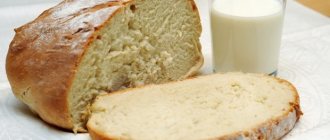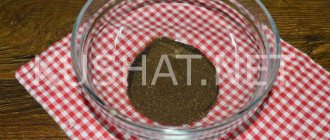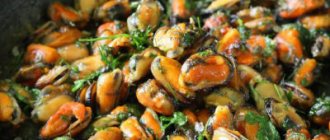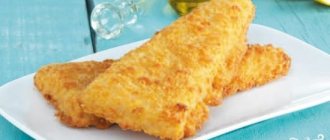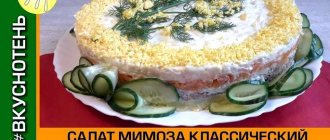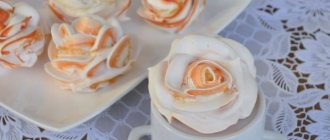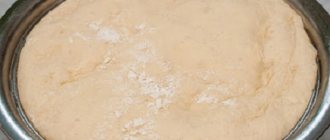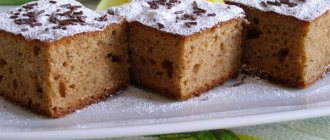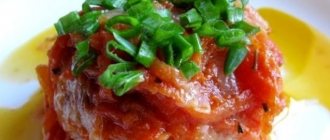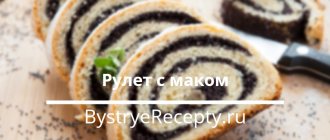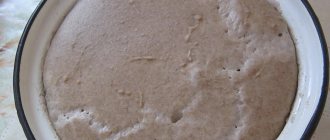Just a year ago I didn’t know how to bake sourdough rye bread at home in the oven. And it was a great discovery for me that baking can be yeast-free! When I studied this issue in detail, I found an alternative to industrial yeast - spontaneous fermentation sourdough. It consists of flour and water, and contains wild yeast and lactic acid bacteria. With proper care of this starter, you can bake incredibly tasty and healthy bread. In addition, rye bread is baked exclusively with rye sourdough. It turns out with a slight sourness, which is a priori inherent in any baked goods made on the basis of rye flour. Today I want to share a recipe for sourdough rye bread. This is one of the easiest recipes that lovers of 100% rye bread will definitely like. It is lower in calories than wheat. Therefore, it is suitable even for those who are on a diet. With this bread, all kinds of sandwiches or croutons will turn out very tasty.
Beneficial features
Before you start directly studying the recipe for homemade yeast-free rye bread, it is worth mentioning why this product would be an excellent option to choose. First of all, you should know that thanks to the ingredients, the composition of the product is distinguished by a huge number of various vitamins and mineral elements that a person needs for the normal functioning of the body. However, in addition to this, it also contains other substances that the body needs: fatty acids, coarse fiber and essential amino acids.
In addition, rye yeast-free bread prepared at home using a simple recipe has a fairly low glycemic index. Therefore, it will be useful even for diabetics. And thanks to its low calorie content, you can safely eat it even if you are losing weight, since the plant fibers contained in bread allow you to normalize the functioning of the gastrointestinal tract and even remove waste and toxins that clog it from the body.
So, rye yeast-free bread, recipes for which can be found in the article, is much more healthy than wheat bread. With its help, you can not only prevent obesity and diabetes, but also many cardiovascular and cancer diseases.
Recommended intake
If you make your own yeast-free bread from rye flour according to the recipe, you can get a tasty and healthy product that will be an excellent addition to lunch or dinner. However, this does not mean that it can be used thoughtlessly. According to nutritionists, it is most optimal to eat no more than 3 or 4 small pieces per day, that is, approximately 150 grams. This amount is quite enough to avoid the possibility of heartburn, as well as improve blood quality. In addition, such an amount of baked goods will not affect your figure in any way, since 100 grams of the product contains only 117 Kcal.
Using rye flour
To get a tasty product, you should choose the main ingredient with special care. If you decide to start baking bread at home, you should always remember that preparing even a simple recipe for yeast-free rye bread will be a little harder than wheat bread. This is due to the flour itself, which has a different chemical composition and physical properties.
To knead dough from such flour, you will need a noticeably smaller amount of water, so it turns out to be quite viscous and sticky, heavier, and therefore not so fluffy. This is why chefs often recommend adding another type of flour to rye flour. So you can safely add wheat, oatmeal, buckwheat or corn flour, depending on your taste, in order to get the perfect dough consistency.
However, in no case should you forget that any flour should be thoroughly sifted before cooking so that it is saturated with oxygen. So before you put the flour in the bowl, you should take a fine sieve and sift all the flour at least 2 or 3 times.
Housewives' recommendations
There are several recipes for rye yeast-free bread with photos that you can take note of. However, before you start cooking, you should remember a few little tricks and recommendations that experienced housewives use:
- To make the dough more fluffy, it is best to take mineral water with gas, and then pour it into the flour in a thin stream, constantly stirring the dough. However, if it is not available, then boiled or filtered water may well be a substitute.
- When working with rye flour, it is best to use kitchen scales rather than measuring cups. This makes it easier to follow the recommended proportions.
- For those who love aromatic and spicy bread, it is worth adding a variety of spices to the dough. Rye flour perfectly enhances the taste of cumin, turmeric, cardamom, chili, coriander, mustard, oregano and thyme. So, if you wish, you can experiment.
Chapati (Indian flatbread)
- Wheat flour - 1 cup.
- Water (You can use whey) - 1/2 cup.
- Salt (Optional) - 1/2 tsp.
- Butter (For greasing flatbreads)
Knead the dough and leave for half an hour. Wet your hands with any vegetable oil, roll the dough in flour and knead it thoroughly again. Divide the finished dough into equal pieces the size of a small egg and roll them into balls. Flatten each ball into a flat cake and roll it in flour. Roll out a thin flat cake and fry (dry) in a dry (no oil) frying pan until light brown spots. The cake should bubble and puff up. Turn the flatbread over to the other side and fry until done. It usually takes 2-4 minutes to prepare one flatbread. Brush the finished flatbreads with butter and serve hot.
Recipe for yeast-free rye bread in the oven
If you decide to make rye bread without yeast, then the best option would be to first make your own starter and brew. This will not only make the baked goods delicious, but also give it a rich aroma and pleasant sourness. It is with the preparation of sourdough that you should begin.
So, let's try to understand what sourdough is and why it is needed. In its classic version, this ingredient is obtained by combining alcoholic and lactic acid fermentation. In some ways, it replaces yeast, allowing baked goods to be porous and soft.
To prepare rye sourdough, you will need to take about a glass of dried hop cones, and then pour 400 ml of water over them and put them to boil. You don’t need to do this for a long time—just a minute is enough. Then the decoction should be infused for about 8 hours. The prepared broth is thoroughly filtered and then poured into a fermentation container. In total you will need about a glass of liquid. Half a glass of rye flour and a tablespoon of honey or sugar are also added to the container. Everything is mixed and sent to a warm place for about a day. This time is enough for the mass of the starter to increase by about 2 times.
If you don’t have any desire to bother with hop decoction, then you can prepare a simple sourdough starter. To do this you will need to take 100 grams of rye flour and 130 ml of water. The mass is kneaded and covered with gauze, and then placed in a warm place for a day. From the second day, the starter will need to be fed with the same amount of flour and water. It will be ready for use in about 5 days.
Kneading rye dough
10 hours have passed and my dough is ready. It smells nice and there are a lot of bubbles on the surface.
Now I start kneading the dough. First you need to add to the bowl with the dough:
- 140 grams of water and stir;
- then add 400 grams of rye flour and mix everything until smooth. You can use peeled rye or whole grain flour;
- then add 10 grams of salt.
Rye dough does not require active kneading. Simply mix all ingredients until smooth. I will knead the dough by hand, but you can use a stand mixer or dough kneader.
Place the finished dough in a bowl and cover the top with film. Leave the dough for 2-2.5 hours to ferment at +28-30°C. I place the bowl in the oven with the light on, where I have a stable temperature of +30°C.
Step-by-step preparation
When the starter is ready, you can start brewing. For it you will need to mix one and a half teaspoons of coriander, 25 grams of red malt and 85 grams of rye flour. Boiling water is added to this mixture, and then everything is kneaded. The tea leaves are prepared in the oven for about two hours at a temperature of 65 degrees. It should be cooled before use.
Now let's move on to preparing the bread. To do this, you will need to follow the following step-by-step instructions:
- You will need to mix the tea leaves, about 6-8 tablespoons of the starter, a couple of tablespoons of honey, 1 tablespoon of vegetable oil and two glasses of water in a bowl. All liquid ingredients will need to be mixed.
- Then pre-sifted rye flour is added to the mixture. You will need about 650 grams of it. The dough is thoroughly kneaded and left for half an hour in a warm place.
- While the dough reaches the desired consistency, prepare the baking dish. You will need to transfer it into it, and then cover it with a towel and leave it for a couple of hours to rise.
- Place a mold with dough in a preheated oven, which is well moistened with water on top to obtain a crispy crust. The bread will be cooked for the first 20 minutes at a temperature of 200 degrees, and the remaining time will be about 40 minutes at a temperature of 180 degrees Celsius. There should be a container of water at the bottom of the oven during the entire cooking time.
The prepared bread will need to be covered with a damp cloth and left to cool. Then it is removed from the mold and served to the table.
LiveInternetLiveInternet
/I just don’t know where this came from, for some reason this is the first time in my dock. no link/ 1 Method of preparing unleavened flatbread (lavash) at home. Ingredients: 1 glass of water 2.5 glasses of flour 1.5 teaspoons of salt (or to taste) Stir salt in water. Gradually pour the flour into the salted water in a thin stream. Mix the dough. Then let the dough stand (rest) for 20-30 minutes. Heat the frying pan. Roll out the flatbread thinly. Dry the flatbread for a few seconds in a hot frying pan. In total you get 10-12 flatbreads. The finished flatbreads must be sprinkled with water (you can use a household sprayer), otherwise they will be crispy. It is better to store the flatbreads in a plastic bag in the refrigerator for no more than 3 days. 2 Bread made from sprouted wheat grains. Wet, germinated wheat grains are pressed into flat cakes, then dried in the open sun, or on a hot stone. 3 Bread according to Arakelyan S.A. Take 2 grade flour 1 kg, vegetable oil 100 g, honey 100 g, a glass of water. A flat cake is made from this dough and dried in the oven at a temperature of 40-48 degrees. After cooking, the bread is placed in cellophane and stored in the refrigerator. This bread is similar to Armenian lavash; all the cells in this bread are alive. Bread based on natural yeast. 1 Homemade yeast. Take 100-200 grams of raisins, wash with warm water, place in a bottle with a wide neck, fill with warm water, add a little sugar, tie 4 layers of gauze on top and place in a warm place. On the 4-5th day, fermentation will begin and you can put the dough. It should be fragrant and non-sour. 2. Sprouted grain bun. Ingredients for the dough: 2 tbsp. spoons of rye flour, 2 tbsp. spoons of wheat flour, 2 tbsp. spoons of sugar, 1 teaspoon of honey. Knead the ingredients, adding water to obtain the consistency of thick sour cream. Infuse the dough for 24 hours. Grind the sprouted grains (in water for a day, two days without water) in a meat grinder, dry, and grind in a coffee grinder. Mix 50×50 with wheat flour. Knead the dough, form into rolls, let stand until the dough rises. Bake in the oven first at medium temperature, then for the last 15 minutes at 200 degrees. Recipes of monastery cuisine. Homemade yeast. 1. From dry hops. Pour hot water (1:2) over the hops and boil in a saucepan. If the hops float, they are drowned in water with a spoon. When the water has evaporated so much that the broth remains half the original amount, it is decanted. Dissolve sugar in the cooled warm broth (1 tablespoon per 1 glass of broth), mix with flour (0.5 cups of flour per 1 glass of broth). Then the yeast is placed in a warm place for two days to ferment. The finished yeast is bottled, sealed and stored in a cool place. To prepare 2-3 kg. For bread you need to take 0.5 cups of yeast. 2. From fresh hops. Fresh hops are tightly placed in an enamel pan, filled with hot water and boiled for about 1 hour, covered with a lid. Then the broth is cooled a little and salt and sugar are added. sand and 2 incomplete glasses of wheat flour. Knead the mass until smooth, put it in a warm place for 36 hours, then wipe a couple of peeled boiled potatoes, mix it with yeast and again let it ferment in the warmth for a day. The finished yeast is poured into bottles and tightly capped. The consumption of such yeast is a quarter cup per kilogram of flour. 3. Malt yeast. It doesn’t hurt to remind you that malt is grain grain sprouted in heat and moisture, dried and coarsely ground. 1 cup flour and 0.5 cup sugar. sand is diluted in 5 glasses of water, 3 glasses of malt are added and boiled for about 1 hour. Cool, pour the still warm solution into bottles, cover loosely with corks and place in a warm place for a day, and then in the cold. The consumption of this yeast for making bread is the same as yeast from dry hops. If there are no hops or malt, you can prepare yeast using the sourdough type: stir the flour in warm water (1 tbsp flour to 1 tbsp water), let it sit for a day in a warm place and knead rye bread with this mixture, but it turns out a bit bland. Rye flour bread is baked for 30-45 minutes at a temperature of 190-210 degrees. Readiness is determined by piercing it with a thin wooden stick (sliver). When it remains dry, without sticky dough, the bread is ready. Wheat bread. Mix? flour with yeast and 1/3 water. Place the dough in a warm place for fermentation. When the dough rises, add the remaining flour, add water with salt dissolved in water, and put it back in a warm place. When the dough has risen, shape it, place it on a baking sheet, let it rest for 40 minutes, then place it in a preheated oven and bake at 220 degrees. (For 5 glasses of wheat flour, 2 glasses of water, 10 grams of yeast, 1 teaspoon of salt). Rye bread. Knead the dough with 1/3 flour, water, yeast and put in a warm place. When the dough has risen, knead it, add the remaining flour, salt, mix and put it in a warm place again. Place the dough in a mold previously moistened with water, leave to proof for 20-30 minutes, place in the oven and bake for 2-2.5 hours. (For 5 cups flour, 2 cups water, 25g yeast, 1 teaspoon salt.) Rye bread with potatoes. Wash 3 medium-sized potatoes, boil with skins, peel, and mash well. Mix the potato mixture with 1/3 of the flour, add warm water, dip in yeast previously diluted in warm water and place in a warm place. Continue in the same way as in the previous recipe. You can use quinoa seeds instead of potatoes. Rye bread with bran. Knead the dough from warm water, yeast and? flour, put in a warm place for 30 minutes. When the dough rises, add the remaining flour and bran, knead the dough, leave again in a warm place for 30 minutes, then put it in a mold moistened with water, let it rest, then bake. (For 1/3 cup rye flour, 5g yeast, 1 cup water, 1 cup wheat bran). Yeast-free bread (with flaxseed flour) 2 tablespoons flaxseed flour 4 tablespoons regular flour 1 cup kefir 1 teaspoon sugar pinch of soda 1 teaspoon flax seeds Let it stand in a warm place for 2 hours. Bake for 5-7 minutes at to - 210-220o. Bread restores intestinal microflora. Bread made from hop yeast and bran Sourdough: 1 cup of hop cones 0.5 cups of water Boil for at least 10-15 minutes. Place already softened hop cones on a wooden board, put bran on top of them and sprinkle with flour (2 parts hops, 4 parts bran, 1 part flour). Air dry. You don't need to be in the room - you might get dizzy. Baking bread: Stir the starter with whey, add 1 tablespoon of flour, salt, sugar. Do it overnight, stand up 2-3 times and beat the dough, adding flour. Strain the dough so that there are no hop cones. Then add flour and let the dough rise twice. To make good bread, you need to stir so that the back is “wet.” Butter dough: Add milk, 3 eggs, vegetable oil to the same dough.
Recipe for rye yeast-free bread with kefir
As has been shown, in practice you can safely prepare the product under study without pressed fungi using kefir - this ingredient will make it more tender and tasty. To prepare, you will need to prepare the following food set:
- 200 grams of peeled rye flour;
- 100 grams of wheat flour 2 grades;
- 300 ml kefir of any fat content;
- half a teaspoon of soda;
- 1 teaspoon sugar and salt.
Now let's get started with the preparation. To do this you will need:
- Sift the wheat and rye flour thoroughly and then pour it into a deep bowl. Salt and sugar are added to the dry ingredients.
- Next, kefir and baking soda quenched with it are added to the flour, which will act as a leavening agent. All ingredients are then mixed with a spoon, and then simply laid out on the table.
- Now you should start kneading. You will have to work a little, because it will be incredibly difficult to get an elastic dough. But as soon as it becomes normal in consistency, you can transfer it to a bowl and cover with a towel.
- It should steep for about 40 minutes, but if desired, you can leave it for an hour. During this you need to prepare the mold by greasing it with oil and preheat the oven to 230 degrees.
- Once the dough is ready, place it in the mold and make cuts at the top. Then lightly sprinkle it with flour and put it in the oven. The baked goods will take about 50 minutes to prepare. For the first twenty minutes you should keep it at a temperature of 230 degrees, and then slightly reduce the heat to about 200 degrees and cook on it for the remaining time. Once the bread is ready, check it and cool it. Only after this can it be served directly to the table.
The best recipes for YEAST-FREE BREAD
The combination of starches and protein is the most difficult for digestion and dangerous for health, so mixing nuts and seeds with grains can be very tasty, but it adds complexity to any recipe
Before we begin, let's remember:
- the combination of starches and protein is the most difficult for digestion and dangerous for health, so mixing nuts and seeds with cereals can be very tasty, but it makes any recipe heavier (unlike pulp or grated vegetables, fiber always helps digestion, enhances peristalsis, absorbs toxins and enriches any dish);
— sprouted grains are always easier to digest than “dry” ones, even after heat treatment (however, these can only be ground into “minced meat” and not into flour);
— sweets (dried fruits) do not go well with starches, so it is better to add them minimally.
Homemade yeast-free bread recipes
1. The simplest thing is unleavened flatbread.
Ingredients:
- 1 glass of water - 2.5 cups of flour (preferably, of course, whole grain - or grind it yourself, ideally) - 1.5 teaspoons of salt (or to taste). - vegetables - a little bell pepper, carrot cake from juice, olives, sun-dried tomatoes, garlic, herbs are also suitable.
Preparation:
Stir salt in water. Gradually pour the flour into the salted water in a thin stream.
Mix the dough. Then let the dough stand (rest) for 20-30 minutes.
Heat the frying pan.
Roll out the flatbread thinly.
Dry the flatbread for a few seconds in a hot frying pan. In total you get 10-12 flatbreads.
The finished flatbreads must be sprinkled with water (you can use a household sprayer), otherwise they will be crispy.
It is better to store the flatbreads in a plastic bag in the refrigerator for no more than 3 days.
2. Very simple - a little kefir and salt + rye flour, depending on your mood, you can add cumin, seeds, etc.
Sift the ground wheat (in a coffee grinder) thoroughly through a fine sieve to obtain 3 cups of flour (or take ready-made whole grain flour - but it is worth remembering that it cannot be stored for a long time, so store-bought - probably with additives!).
Then add a little salt (to taste), your favorite spices (you can coriander, cumin, etc.), 1/2 spoon of table soda, you can add ground seeds or nuts, and also gradually pour in, while stirring the dough, whey from homemade cottage cheese, about a glass and a half until you get a thick dough.
Mix well and bake in a cake pan.
Place the dough on baking paper.
Bake for an hour in the oven, preheated to 180-190 degrees.
Instead of whey, liquid cottage cheese and 2 eggs are suitable (preferably just yolks). The taste will be almost the same, kefir will also work (much better than baker's yeast, although kefir itself is also a yeast product (a fermentation product of the kefir grain).
3. Based on Irish soda bread
- 250 g whole wheat flour
- 250 g rye flour
- 250 g oat flour
- 1/2 cup ground nuts
- 4 tbsp vegetable oil
- 1 tsp salt
- 1 tsp soda
- juice of 1 lemon
- 500-600 ml water
Preheat the oven, grease a baking sheet with oil and sprinkle with flour. Lay out the dough. Make slits in the crust while baking.
Lemon juice and water can be replaced with whey, kefir, etc., you can add raisins, fried or raw onions, bell peppers, cumin, carrot juice cake, etc.
4. Potato cakes
Ingredients:
- 300 ml (one and a half cups) mashed potatoes (can be in water)
- 1 tsp salt
- 300 ml flour
- 1 egg (you can try using only the yolk - this way the recipe as a whole will be easier for digestion and, accordingly, less harmful).
Preparation:
Quickly knead the dough, divide into 10 parts and place on baking paper in the form of 10 thin (about 5 mm) cakes. Poke each one with a fork, otherwise the cakes will rise.
Bake at 250 C for about 13-15 minutes (should be slightly browned).
Cool, can be eaten warm or cooled, very tasty with butter, sour cream and herbs.
5. Oatcakes
Ingredients:
- 600 ml (3 cups) rolled oats
- 250 ml flour (can be dark, whole grain, wallpaper)
- 1.5 tsp salt
- 1 tsp soda
- 600 ml kefir
- 50 g melted butter (or olive)
Preparation:
Knead the dough, let it sit for half an hour, then, just like in the previous recipe, lay out and knead the round cakes and bake at 250 C for about 15 minutes (you need to watch until they start to brown a little).
You don’t have to give it a round shape, but lay it out as best you can on baking paper, poke it with a fork and roughly cut it after about 7 minutes, when the dough begins to set. And then, after removing from the oven, break it onto a plate.
6. Quick yeast-free pizza dough
Ingredients:
- 2 tbsp flour - 1 tsp salt - 2 eggs - 1/2 tbsp warm milk - 1 tsp olive oil
Preparation:
1. Mix flour with salt. 2. Mix the eggs in a bowl with warm milk and add olive oil. 3. Pour the resulting mixture into the bowl of flour in small portions, stirring constantly. When all the liquid is absorbed into the flour, start kneading the dough, dusting your hands with flour from time to time. Knead for 10 minutes until the dough becomes elastic. 4. Form the dough into a ball, wrap it in a damp towel and leave for 15 minutes.
OR
Ingredients:
- 1.5 cups wheat flour,
- 1.5 cups peeled rye flour,
- about 1 glass of water,
- a pinch of salt.
If you prefer soft dough, you will need kefir instead of water and a pinch of baking soda (first, soda is added to the kefir, left for 5 minutes, then the mixture is poured into the flour). Bake for 15 minutes and then another 15 with tomato paste and vegetables.
7. Rye bread with traditional yeast-free sourdough
Sourdough is prepared on some kind of acidic base (for example, brine). Warm brine, peeled rye flour, a little sugar for fermentation. Mix flour to thicken the sour cream. In a warm place the starter will rise slowly. She needs to be besieged several times. Each time it will rise faster.
After the starter is ready, put in the dough: warm water (required amount), starter, salt, sugar (necessary for the starter to work), peeled rye flour. The thickness of the dough is like pancakes. It rises in a warm place for 4-5 hours, you can set it down once. If the dough rises faster, it needs to be settled and kept for 4 hours - this is the norm for rye bread.
Add a little wheat flour (~ 1/10 of the total amount), salt, sugar to the dough batch, and knead with peeled rye flour. The dough is "light". After the dough has risen, without kneading it, put it into molds (1/2 of the volume of the mold).
It is better to work with rye dough by wetting your hands in water. Using a wet hand, smooth it into the mold and place it in a warm place to rise.
Rye bread is baked in a hot oven for 1 - 1.5 hours. After baking, the crust is moistened with water. You cannot cut rye bread right away; it must cool. The readiness of the bread is checked by squeezing the bottom and top crusts: if the crumb between them quickly straightens, then the bread is baked well.
The first baking may be unsuccessful, but each time the leaven will gain strength and the dough will rise quickly. A little dough or a piece of dough is left for the next baking and stored in the refrigerator.
The night before, you need to update the starter: add a little water (can be cold) and mix in rye flour. It will rise until the morning (~ 9-12 hours) and you can place the dough (see above).
8. Hop sourdough bread
1. Preparation of sourdough 1.1. Pour dry hops with double (by volume) amount of water and boil until the water is reduced by half. 1.2. Leave the broth for 8 hours, strain and squeeze. 1.3. Pour one glass of the resulting broth into a half-liter jar, dissolve 1 tbsp in it. a spoonful of sugar, 0.5 cups of wheat flour (stir until the lumps disappear). 1.4. Place the resulting solution in a warm place (30-35 degrees), covering it with a cloth for two days. A sign that the yeast is ready: the amount of solution in the jar will approximately double. 1.5. For two to three kilograms of bread you need 0.5 cups of yeast (2 spoons).
2. Number of components. To bake 650-700 g of bread you need:
- water 1 glass (0.2 liters);
- For each glass of water you need: 3 glasses of flour (400-450 gr.);
- salt 1 teaspoon;
- sugar 1 table. spoon;
- butter or margarine 1 table. spoon;
- wheat flakes 1-2 full table. spoons;
- leaven.
3. Preparing the dough. 3.1. One glass of boiled water, cooled to a temperature of 30-35 degrees, is poured into the mixing container, and 1 table is stirred in it. spoon of sourdough and 1 glass of flour. 3.2. The prepared solution is covered with a cloth and placed in a warm place for 2 hours until pinpoint bubbles form. The presence of bubbles means that the dough is ready for kneading dough.
4. Kneading the dough. 4.1. In a clean dish (a glass jar with a volume of no more than 0.2 liters, with a tight-fitting lid), put the required amount (1-2 tablespoons) of the dough; this dough will serve as a starter for the next bread baking; it must be stored in the refrigerator. 4.2. Add 2 tbsp to the container with the dough. spoons of flour and other ingredients in accordance with clause 2.1., that is, salt, sugar, butter, flakes (flakes are an optional component). Knead the dough until it sticks to your hands and place it in the mold. 4.3. The form is filled with dough no more than 0.3-0.5 of its volume. If the mold is not coated with Teflon, it must be greased with vegetable oil. 4.4. Place the form with the dough in a warm place for 4-6 hours. To retain heat, it must be covered tightly. If after the specified time the dough approximately doubles in volume, it means it has loosened and is ready for baking.
5. Baking mode. 5.1. The pan should be placed in the middle of the oven on a rack. 5.2. Baking temperature 180-200 degrees. Baking time 50 minutes.
Cook with love!
PS And remember, just by changing your consumption, we are changing the world together! © econet
Using a bread machine
A huge variety of equipment has now appeared in stores, which significantly simplifies the life of housewives. So, if you wish, you can try a simple recipe for yeast-free rye bread in a bread machine. This way, you can significantly reduce the time spent and calmly go about your business.
So, now let's study the cooking process itself. First of all, you will need to pour all the necessary ingredients into the bowl. The very first is rye sourdough - you will need about 800 ml of it. Then a glass of warm boiled water, about 2 teaspoons of salt and 500 grams of rye flour are added to it. But after this, you just need to install the desired program - “Rye Bread” and leave the machine to do the cooking itself. The bread maker itself knows exactly how long it will take for kneading, standing and baking. So the only thing required of you is not to open it. Using a yeast-free rye bread recipe in a bread machine will give you a great end result - a fragrant and crispy, but at the same time very healthy product.
Using a multicooker
Cooking bread in this device is quite rare, however, it is really possible. Now there are several recipes for yeast-free rye bread for a slow cooker, but the best option would be to make sweet pastries with dried fruits. This product is perfect as a breakfast or afternoon snack, as children really like it.
To prepare bread in a slow cooker you will need the following ingredients:
- 350 grams of rye flour;
- 350 grams of whole grain flour;
- 65 g buckwheat honey;
- 350 ml water;
- 2 teaspoons salt;
- 50 g of dried fruits (a mixture of dried cherries, dates, prunes and dried apricots);
- all the prepared tea leaves.
Cooking process
Based on the recipe for yeast-free rye bread in a slow cooker, you should perform the following steps:
- The first step is to make tea leaves. To do this, you will need to heat a glass of water, and then stir in 4 tablespoons of fermented malt from rye grains and 65 grams of peeled rye flour. To make the bread more aromatic, you can add a teaspoon each of coriander and cumin. The resulting mixture should be covered with cling film and left to cool completely.
- As soon as the tea leaves are prepared, you can start kneading the dough. To do this, you need to combine all the ingredients and then mix them thoroughly.
- The prepared dough is then left to ferment - this will require placing the bowl with it in a warm place for about 3 or 4 hours. Afterwards you should leave another hour for proofing.
- Only after proofing can you send the dough to the multicooker. Now you only need to select a program - usually the “Baking” function is suitable for this. The timer should be set to 50-55 minutes depending on the size of the dough.
How to make “Rye flour bread without yeast”
Prepare the necessary ingredients.
Mix rye and wheat flour.
Add rolled oats and soda. Add butter, cut into cubes. Stir.
Pour in kefir.
Knead the dough. Dust a baking sheet with flour and shape into a loaf of bread. Make a cross-shaped cut in the center. Bake the bread in the oven for 35 minutes, temperature 200 degrees.
Transfer the baked bread to a wire rack and cover with a towel until it cools completely. Bon appetit!
